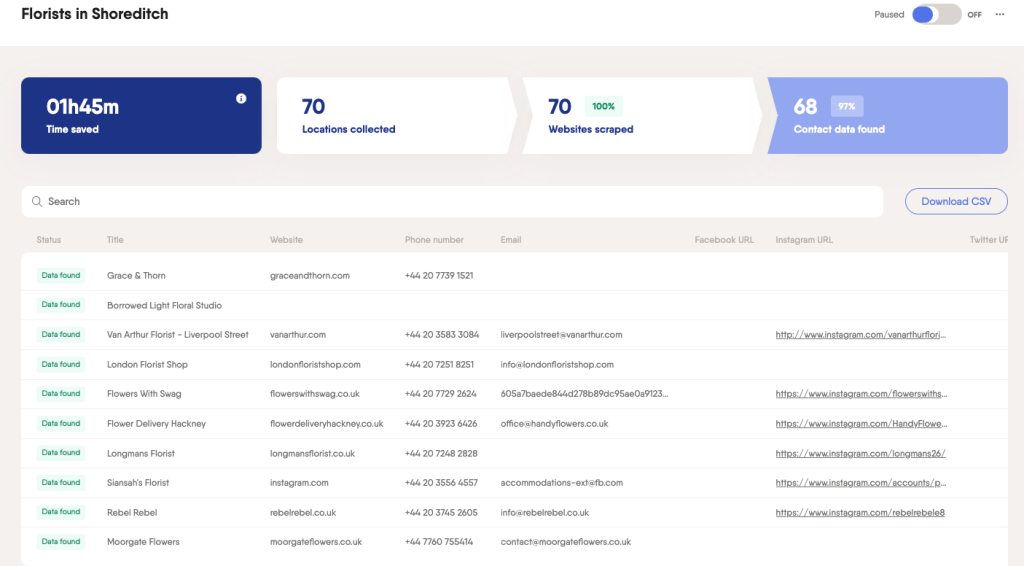In the ever-evolving world of cybersecurity, the line between innovation and ethical responsibility is often blurred. While the primary goal is to protect data and secure systems, there are times when the tools we use to improve business processes can raise important questions about privacy and security. In this post, I’ll share a strategy I developed in my previous role that significantly boosted our lead generation efforts, while also addressing the privacy implications that come with such practices.
The Challenge: Connecting Private Equity with Golf Clubs
At the company I worked for, our mission was clear: secure meetings between golf club ownership and private equity firms interested in acquisitions. This required us to gather detailed information about the management of various golf clubs across the country. Initially, the process involved manually searching for information on each contact, which was not only time-consuming but also left room for human error.
The Initial Approach: Manual Research
My role involved gathering names and emails of golf club management and then searching for additional information to help personalize our outreach. This typically meant finding their LinkedIn profiles and noting key details such as their education and current place of work. While this manual approach was effective, it was far from efficient—especially given the large number of contacts we needed to reach.
The Solution: Automation with Phantombuster
To streamline the process, I turned to automation. After researching various tools, I discovered Phantombuster, a platform that allowed me to automate the task of finding LinkedIn profiles and scraping relevant data. Here’s how I implemented this solution:
- Data Gathering: I started with a file containing names and emails of management contacts at various golf clubs.
- LinkedIn Profile Discovery: Using Phantombuster, I automated the process of pulling LinkedIn URLs for these contacts. This drastically reduced the time spent on manual searches.
- Data Scraping: Once the LinkedIn profiles were identified, I configured Phantombuster to scrape key details—specifically, their education and place of work. These details were essential for crafting personalized outreach emails.
- Broader Data Collection: Beyond LinkedIn, I explored the potential of scraping publicly available information across multiple platforms. This capability allowed us to build comprehensive profiles that enhanced our outreach efforts, but it also introduced significant privacy concerns.
- Personalized Outreach: With this data in hand, the team could craft highly personalized emails, significantly increasing our chances of securing meetings.

The Results: Efficiency Meets Privacy Concerns
The automated process I implemented transformed our outreach efforts. What once took hours could now be accomplished in minutes, with greater accuracy and consistency. However, this efficiency came with ethical implications, particularly around privacy and data security.
The Privacy Implications: A Cybersecurity Perspective
While the data we collected was publicly available, the process of automating its collection at scale raises critical privacy concerns. In cybersecurity, the principle of “just because you can, doesn’t mean you should” is particularly relevant. Scraping data from multiple sources, even if it’s public, can feel invasive when done en masse. This practice touches on key issues in cybersecurity, such as:
- Data Minimization: Collecting only the data necessary for a specific purpose is a fundamental principle in cybersecurity. In this case, the automated collection of detailed personal information could be seen as overstepping, especially if the data is used beyond its intended purpose.
- Transparency and Consent: In cybersecurity, transparency about data collection practices and obtaining consent from individuals are crucial. Automated data scraping, especially without the knowledge or consent of the individuals involved, can undermine trust and raise ethical questions.
- Security of Collected Data: Once data is collected, it must be protected against unauthorized access or misuse. In the context of this project, ensuring that the scraped data was securely stored and used only for its intended purpose was critical.
The Takeaway: Ethical Automation in Cybersecurity
This experience highlighted the need to balance innovation with ethical considerations in cybersecurity. Automation can be a powerful tool for enhancing business processes, but it must be implemented with a keen awareness of privacy and data security.
As cybersecurity professionals, our responsibility extends beyond protecting systems from external threats. We must also ensure that our methods for collecting and using data respect the privacy and autonomy of individuals. This is especially true as automation and data scraping become more prevalent in both business and security practices.
Conclusion
In the world of cybersecurity, turning emails into leads is just one example of how technology can drive business success. However, it’s essential to ask ourselves: at what cost to privacy and ethical standards? As we continue to innovate, we must remain vigilant in ensuring that our methods are not only effective but also align with the core principles of cybersecurity—protecting data, respecting privacy, and maintaining trust.
Credit: This article is based on my personal experience and observations in the field of business development and data automation, with a focus on cybersecurity implications.